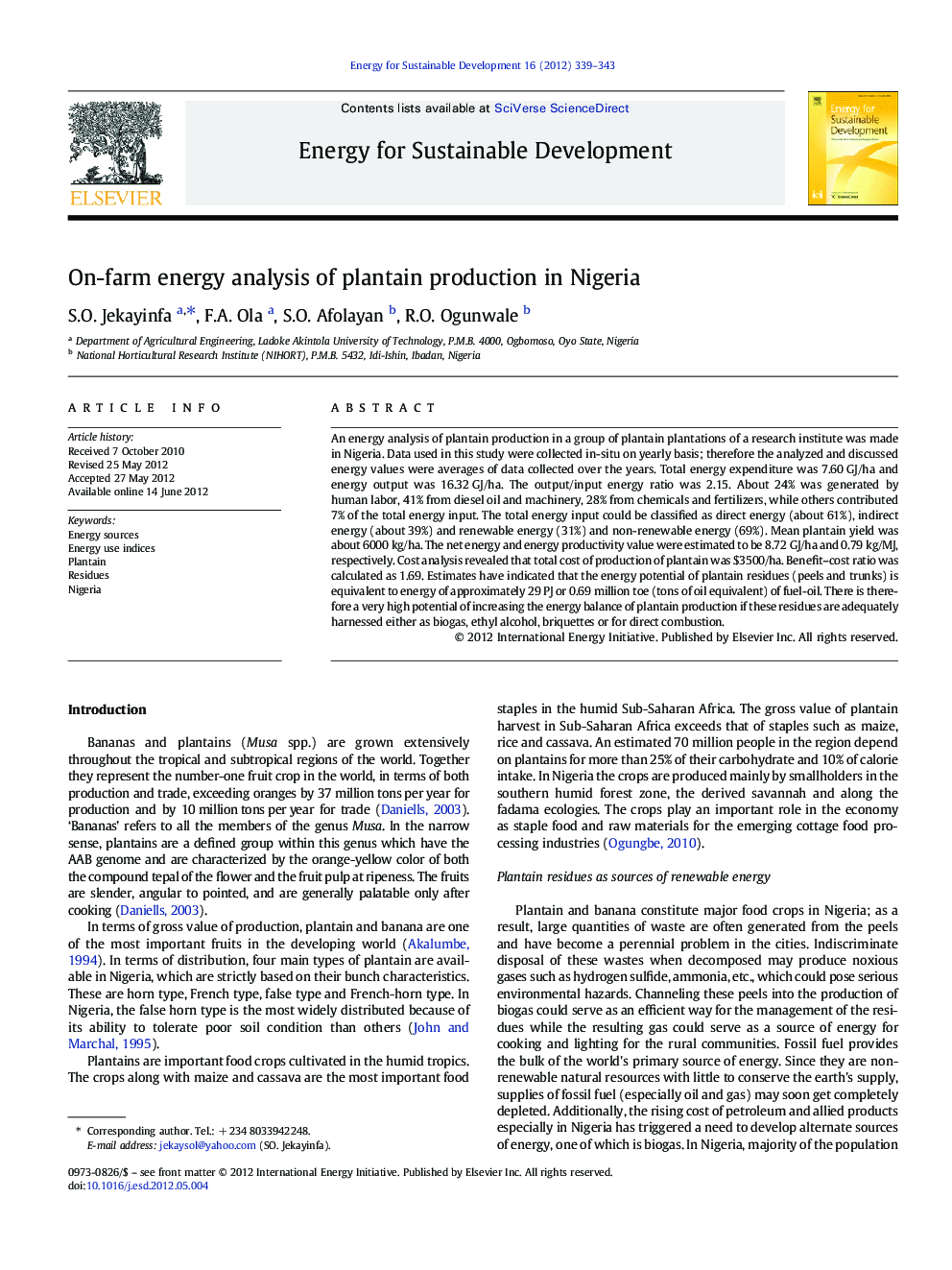| Article ID | Journal | Published Year | Pages | File Type |
|---|---|---|---|---|
| 10501960 | Energy for Sustainable Development | 2012 | 5 Pages |
Abstract
An energy analysis of plantain production in a group of plantain plantations of a research institute was made in Nigeria. Data used in this study were collected in-situ on yearly basis; therefore the analyzed and discussed energy values were averages of data collected over the years. Total energy expenditure was 7.60 GJ/ha and energy output was 16.32 GJ/ha. The output/input energy ratio was 2.15. About 24% was generated by human labor, 41% from diesel oil and machinery, 28% from chemicals and fertilizers, while others contributed 7% of the total energy input. The total energy input could be classified as direct energy (about 61%), indirect energy (about 39%) and renewable energy (31%) and non-renewable energy (69%). Mean plantain yield was about 6000 kg/ha. The net energy and energy productivity value were estimated to be 8.72 GJ/ha and 0.79 kg/MJ, respectively. Cost analysis revealed that total cost of production of plantain was $3500/ha. Benefit-cost ratio was calculated as 1.69. Estimates have indicated that the energy potential of plantain residues (peels and trunks) is equivalent to energy of approximately 29 PJ or 0.69 million toe (tons of oil equivalent) of fuel-oil. There is therefore a very high potential of increasing the energy balance of plantain production if these residues are adequately harnessed either as biogas, ethyl alcohol, briquettes or for direct combustion.
Related Topics
Physical Sciences and Engineering
Energy
Energy (General)
Authors
S.O. Jekayinfa, F.A. Ola, S.O. Afolayan, R.O. Ogunwale,
